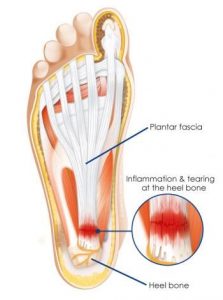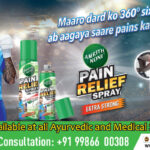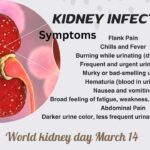

Heel pain is a common problem experienced at the bottom of the foot, typically at the point where the heel bears the maximum body weight while standing. It is most painful while trying to get out of bed or after prolonged rest. Symptoms tend to become more manageable after a few steps and continued walking. Heel pain is usually not associated with other neurological symptoms like tingling, burning etc. Overusing the heel in acute pain can also result in swelling and redness.
There are a host of reasons that can cause of heel pain. The three most common causes of heel pain are:
- Heel Spur (or Calcaneal spur)


Constant stress on the foot, usually encountered as a result of the person’s occupation, typically sportsmen, policemen, teachers, catering staff, hospital staff etc. Causing the bony outgrowth and the symptom as described above.
- Plantar fasciitis


Radiological investigation may reveal nothing or may be a presence of a spur. It is quite possible that a patient may have evidence of a spur but that may be asymptomatic and become somewhat confusing because of the similarity in the symptoms.
- Achilles Tendinitis


Certain lifestyle related risk factors and use of long term medications are also suspected to contribute to worsening this condition.
Management and treatment modalities
In general for all three conditions (Specific measures are prescribed for each condition and must be followed as advised by the physician).
- Rest: Importance of rest cannot be overemphasised. However, certain prescribed activities can help reduce pain. It is important to strike the right balance between rest and activity.
- Change in Footwear: Some patients may find wearing shoes or sandals with softer insoles offer good relief.
- Cold Compress: Ice packs are very potent way to reduce inflammation, pain and relax the surrounding tissues.
- Medication: Typically non-steroidal anti-inflammatory drugs are adequate. However blatant misuse of steroids to avoid frequent trips is quite common.
- Physiotherapy: The balance between rest and activity is key to maintaining a normal lifestyle.
- Cold Laser Therapy: Cold Laser Therapy is the most definitive therapy for all three conditions. It very effectively and permanently repairs tissues and provides good, long term pain relief.
- Surgery: Surgical intervention has limited value and usually considered only for trauma related tissue damage.
Cold Laser Therapy in Heel Pain
All three conditions respond quickly and definitively. Cold laser Therapy offers the best quality of repair and relief in the shortest period of time as compared to all other modalities. In addition to symptomatic relief, cold laser therapy does not have any other significant side-effects commonly associated with use of medication, drugs or surgery. Before and after X-rays (wherever relevant) provide clear evidence of problem resolution. Any need for surgery must be assessed only after considering all non-surgical options unless mandated by any emergency.


Dr Ravi Pandit,
Medical Director
Dr. Nandan’s Cold Laser Therapy
55/1 East Park Road, 15th Cross,
Near MLA School, Malleswaram,
Bangalore – 560 055
Email: ceo@sreesanjeevini.com
Tel: +91-80-40983273, +91-9663177116












